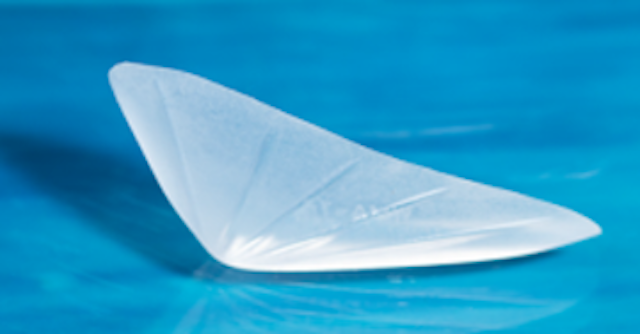Postoperative Care
Besides routine oral antibiotics after surgery, the only intraoral care is the use of a low concentration chlorhexidine (0.12%) mouthwash after meals and as part of regular oral hygiene for the first few weeks after surgery. There will be some restricted oral opening from the trauma to the masseter muscle which will fully recover in a few weeks or month after the surgery. That recovery process can be expedited by jaw stretching/range of motion therapy done as soon after surgery as the patient can tolerate.
Expect the jaw angle/facial swelling to slowly go down after 4 to 6 weeks after surgery. Final aesthetic outcome should await a full three months recovery.
Complications
Infection
Jaw angle implants do have a higher risk of infection due to their posterior placement in the back of the mouth as well as the incisional exposure to chewing and food debris at the molar teeth. Its occurrence almost never appears for 3 to 6 weeks after surgery, much to the surprise of the patient. The initial treatment strategy is oral antibiotics which will return the face to normal in almost all cases. Once this has happened the antibiotics should continue for a month or longer after the onset of the infection. Thereafter they may be stopped and in some cases will have provided the cure. If not then a return to surgery for implant removal and/or removal/resterilization and immediate reinsertion can be done.
Wound Dehiscence
Separation of the mucosal edges is not rare in the back of the mouth and stresses the importance of a two layer closure. Mucosal separations are managed by oral rinses and time. Should the entire incision come apart and the implant exposed in its depth, do not panic as all is not lost. Usually immediate attempts at reclosure fail due to the inflamed tissues. It can be managed by packing (like a dry socket dressing) and oral antibiotics which will allow for secondary healing to occur in many cases. If not it will buy time for the tissue quality to improve for more successful attempts at reclosure.
Implant Asymmetry
This is the number one aesthetic jaw angle implant complication. It is not rare as placing two independent implants over the back part of the lower jaw through the limited visibility of the mucosal incisions incurs this potential risk. First and foremost the symmetry of jaw angle implants, like any facial implant, should not be judged for a full three months after the surgery. This is important to let all the swelling and tissue contraction around the implants to occur. But also the tissue quality is not adequate to allow for any revisional surgery without incurring a high risk of wound breakdown.
Before any implant adjustment is attempted it is critical to get a 3D CT or CBCT (cone beam) scan of the lower jaw to check actual implant positions. Trying to adjust such implants blindly is a setup for just creating a different type of implant asymmetry. Know exactly the exact implant locations will allow one to more accurately know what to change its position more favorably.
Too Big/Too Small/Undesired Shape
The three month rule applies for judging the aesthetic outcome of any facial implant surgery. Some patients will even say that they have continued to see continued changes to the their jaw angle shape six months after surgery. To small of any implant shape requires a larger size if commercially available. Too large of a size may be able to be successfully improved by hand carving down the implant. Unintended shape outcomes may be a function of choosing a different style of jaw angle implant. (lateral widening vs vertical lengthening) In some cases no standard commercial style/size jaw angle implant or its adjustment may suffice. This is where the role of custom jaw angle implants come into utility.
Masseter Muscle Dehiscence
Should the pertygomassteric ling become partially or completely disinherited, it will likely retract superiorly. This will cause both implant reveal (implant skeletonization) and a high muscle bulge when clenching or chewing. While that risk exists with any jaw angle implant, a vertical lengthening jaw angle implant has a higher risk.
Should it occur treatment options include muscle repositioning back over the implant, and camouflage procedures such as fat injections, injectable fillers and a soft tissue implant are all potential treatment options.
Dr. Barry Eppley
Indianapolis, Indiana



